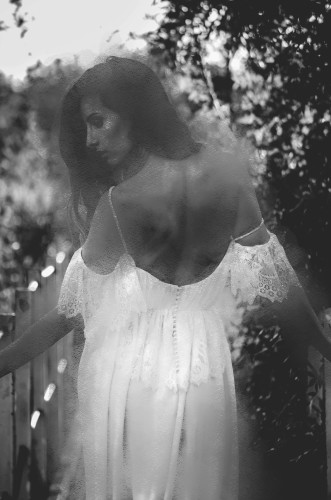The Tale of the Weeping Woman is an ultimately tragic one, but because of this grim tale, her story has been told as a bedtime story and over a campfire as a means of entertainment for over a hundred years—this legend is known most often as La Llorona, the weeping woman, and the wailing woman.
This grieving woman’s story has changed from family to family, as well as with each generation of storytellers. In most of the popular versions of her story, she is portrayed in three main ways—the first, La Llorona appears as an indigenous woman whose husband has cheated on her, in an attempt to seek revenge for his infidelity, she drowned her children in a river but was immediately so remorseful as she looked upon her dead children that she committed suicide alongside them. The second version, La Llorona is the spirit of the Aztec Goddess Chihuacoatl, who as an omen that foretold the devastation of the Aztec society by the arrival of the Spaniards. In the third most popular variation, La Llorona is actually the spirit of Doña Marina, or La Malinche—in life she was the lover and interpreter for Hernan Cortés; in the Mexican community she was considered a traitor—it is believed that Cortés betrayed her with a Spanish woman and she subsequently drowned both of her children in her own despair.
No matter the rendition, she is as popular as ever having drifted into mainstream horror culture and broken the barrier between cultural significance and American entertainment when The Curse of La Llorona was released in 2019.
True Encounters with La Llorona
Like any great legend, there are known encounters with the subject of the legend itself—in this case, La Llorona has been experienced all over Mexico and the adjoining United States. These particular cases seem to underline a different side of La Llorona though, a side which emphasized more of a maternal nature than that of a murderer.
Mexico City, Mexico
In Mexico City, a large family of nine was being haunted by a shadowy figure in the toddler’s bedroom—seeing this figure out of the corner of their eyes was just the first stage of this encounter with La Llorona. Soon whenever they would catch a glimpse of her figure, they began to hear the sound of sobbing in the distance.
The manifestations only got stronger and more rampant after a priest was brought in to cleanse and bless what was thought to be a malevolent entity from the home. Soon, the physical form of the apparition began to appear as a woman in white, who the family recognized as La Llorona; she began moving chairs as well as opening and closing doors. One night they captured movement on the baby monitor, which upon further inspection turned out to be the blanket being moved as if the child were being tucked in by an invisible force. After trying all other avenues, the parents took their toddler to the doctor, at which time they found the child was suffering from medical issues that would have turned fatal if left untreated. Once the child was being treated all manifestations of La Llorona ceased.
Guanajuato, Mexico
Another case of La Llorona appeared to a family of five, where the mother, father, and oldest son would see glimpses of this weeping apparition, who was always standing near the two youngest children. It was strange because the two children she would always hover around would never see her themselves, despite the natural ability of children to be more perceptive to paranormal phenomena that may occur around them. As the manifestations progressed, the sounds of wailing would sweep through their home in the middle of the night and randomly during the day—this would wake everyone in the house except for the children who would never hear her cries.
The manifestations of her spirit and her screams of grief frequented this family more and more often, even when the extended family came to help. The parents became thoroughly concerned for the two youngest children and sent them to stay with their extended family for a period of time and as soon as the children left, so did the regular hauntings of La Llorona. While the children were staying with their extended family, they had planned to have their cousin stay with them for several months and they immediately told him about their experiences with La Llorona. The weirdest part is that a day before the children were set to return, the cousin was arrested and charged with multiple counts of child abuse.
Jarácuaro, Mexico
A single mother and her two children took refuge with the mother’s sister, the plan was that they would stay with her for the foreseeable future, so they ended up moving into one of the rooms in the back of the sister’s aging home. As soon as the three moved in, the entire house began to hear bizarre noises at night, which were eerie footsteps along the floorboards, doors, and cabinets opening and closing at random, as well as the sound of stifled crying. Day and night, the crying began to be accompanied by an apparition of what the family believed to be La Llorona, who would only manifest very briefly.
Even after the home was blessed by a priest, the sightings wouldn’t cease. The mother awoke one night to an unnerving scene, one of her children was sitting on the foot of the bed, speaking to what looked like a shadowy figure near the bed where they all slept. The next day, her child told her that the apparition, who the child referred to as the “nice lady,” told them that they needed to stay in the front room instead. Heeding the ghost’s warning, the mother moved herself and her children out of the back bedroom and into the living room—and none too soon, as two nights later the entire room caved into a sinkhole that had formed below the back portion of the house.
So why does the weeping woman weep? What version of La Llorona did you hear as a child? Let us know in the comments below!

Georgia-based author and artist, Mary has been a horror aficionado since the mid-2000s. Originally a hobby artist and writer, she found her niche in the horror industry in late 2019 and hasn’t looked back since. Mary’s evolution into a horror expert allowed her to express herself truly for the first time in her life. Now, she prides herself on indulging in the stuff of nightmares.
Mary also moonlights as a content creator across multiple social media platforms—breaking down horror tropes on YouTube, as well as playing horror games and broadcasting live digital art sessions on Twitch.


